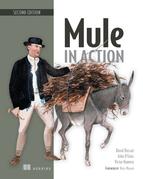Part 2. Running Mule
In part 1, you learned about the fundamentals of Mule. You discovered its philosophy, configuration principles, and major moving parts. You also ran through examples that exercised the main building blocks of Mule services: transports, transformers, routers, components, and patterns. Part 2 will take you further and will guide you through the next steps of running Mule in a production environment.
Mule doesn’t come complete with a predetermined approach to architecting solutions. Each project can use whatever methodology best fits its needs. This said, in chapter 7 we’ll review what we consider to be the major architectures and patterns through which Mule provides the most bang for your buck.
As an ESB and integration platform, Mule supports several very different deployment strategies. In chapter 8, we’ll review these strategies, including how one can successfully run Mule in a highly available fashion.
Problems happen. As tough as it is, Mule can stumble. This usually translates into exceptions being thrown. Chapter 9 will guide you when putting in place a sound error-management strategy. You’ll also learn how to recover from connection flakiness and what Mule offers in terms of transaction management, a must for environments in which data integrity is critical.
All enterprise applications are subject to security concerns, and Mule doesn’t escape these constraints. Chapter 10 will show you how to restrict access to certain resources with authentication and authorization mechanisms. You’ll also learn how to encrypt and decrypt data.
To wrap up the discussion about running Mule in production, we’ll focus on Mule’s threading model in chapter 11. We’ll also discuss how thread pools and processing strategies can be tuned and what techniques you can use to profile and performance-boost your Mule-driven applications.
